Peugeot 308 vs Renault Symbioz – Diferencias y precios en comparación
Compara de un vistazo rendimiento, maletero, consumo y precio.
Descubre ahora cuál es la mejor elección para ti – Peugeot 308 o Renault Symbioz.
The Ultimate Showdown: Peugeot 308 vs Renault Symbioz
In an automotive world driven by innovation and efficiency, the competition between Peugeot and Renault heats up with their latest models. The Peugeot 308 and Renault Symbioz stand as remarkable examples of cutting-edge engineering and design in the modern car market. Each vehicle brings unique attributes to the table, promising comfort, performance, and eco-friendliness in their respective categories. Let's explore how these two contenders stack up against each other.
Design and Dimensions
The Peugeot 308, a sleek hatchback, measures 4367 mm in length, 1852 mm in width, and 1441 mm in height. Its bold design embodies a modern edge, focusing on aerodynamics and style. Meanwhile, the Renault Symbioz, a futuristic SUV, stands taller with a height of 1575 mm. It presents a longer and slightly narrower profile at 4413 mm in length and 1797 mm in width, underscoring its elegance and presence on the road.
Power and Performance
Under the hood, the Peugeot 308 offers diverse engine options, ranging from petrol variants to a full electric version. With power outputs between 130 HP and 225 HP, it can reach a maximum speed of up to 235 km/h. The 308's acceleration time varies, with the most efficient model launching from 0 to 100 km/h in just 7.5 seconds for the electric version.
In contrast, the Renault Symbioz, featuring a full hybrid engine, delivers 143 HP with a torque of 250 Nm. It offers more than adequate performance for urban driving at a top speed of 170 km/h, accelerating from 0 to 100 km/h in 10.6 seconds.
Efficiency and Environmental Impact
Efficiency is where these cars truly shine. The Peugeot 308 displays impressive eco-friendly credentials, particularly in its plug-in hybrid variant which runs at a consumption rate of 1.3 L/100km and registers zero CO2 emissions when in full electric mode. Depending on the model, CO2 emissions can range from 0 to 133 g/km.
The Renault Symbioz's full hybrid system promises a fuel consumption of 4.8 L/100km and CO2 emissions of 109 g/km, making it a competitive option for those seeking lower emissions without compromising on an internal combustion engine's comfort and convenience.
Interior and Practicality
Both the Peugeot 308 and Renault Symbioz cater to families and individuals looking for spacious interiors. The 308 accommodates up to five passengers with a trunk capacity of 412 liters, extending to 361 liters in some variants. Its ergonomic design and intuitive interface make it a joy to drive.
The Symbioz outmatches the 308 slightly in terms of cargo space, boasting a trunk capacity of 492 liters. With a payload capacity of 427 kg, the Symbioz combines practicality with luxury, ensuring passengers enjoy a comfortable and serene ride.
Innovation and Technology
Technological innovation abounds in both models. The Peugeot 308 integrates an array of driver-assistance features accompanying its 2024 model, enhancing both safety and driving pleasure. Its infotainment system is intuitive and adaptive to driver needs.
Renault's Symbioz, on the other hand, positions itself as a concept-influenced vehicle, laden with innovations aimed at future-proof driving. Its hybrid technology blends conventional and electric driving experiences, offering sustainability without sacrificing dynamics.
Conclusion: A Matter of Preference
Both the Peugeot 308 and Renault Symbioz offer compelling advantages, defined by their respective market positions as a hatchback and an SUV. The 308 provides varied powertrain options and slightly better performance metrics for those interested in speed and variety. The Symbioz delivers cutting-edge hybrid technology in a spacious SUV body for an immersive and eco-friendly driving experience. Ultimately, the choice between these two vehicles depends on personal needs and lifestyle preferences.
Aquí vienen los hechos: las diferencias técnicas en detalle
Costes y consumo: El precio y la eficiencia suelen ser los primeros criterios. Aquí se ve qué modelo mantiene la ventaja a largo plazo, ya sea repostando, cargando o al comprar.
Renault Symbioz tiene una ventaja ligeramente en precio: parte desde 30000 €, mientras que el Peugeot 308 cuesta 34700 €. La diferencia es de unos 4698 €.
También se aprecia una diferencia en el consumo: el Peugeot 308 gasta 0.80 L y es claro más eficiente que el Renault Symbioz, que consume 4.50 L. La diferencia es de unos 3.70 L cada 100 km.
Motor y rendimiento: Potencia, par motor y aceleración dicen mucho sobre la experiencia de conducción. Aquí se ve cuál ofrece más dinamismo.
En cuanto a potencia, el Peugeot 308 tiene una ventaja en pequeña medida: 195 HP frente a 158 HP. Eso supone un aumento de unos 37 HP CV.
En aceleración de 0 a 100 km/h, el Peugeot 308 es en pequeña medida más rápido: 7.60 s frente a 9.10 s. Es aproximadamente 1.50 s más veloz.
En velocidad máxima, el Peugeot 308 es algo superior – alcanza 225 km/h, mientras que el Renault Symbioz se queda en 180 km/h. La diferencia es de unos 45 km/h.
También hay diferencias en el par motor: el Peugeot 308 empuja algo con 300 Nm frente a 265 Nm. La diferencia ronda los 35 Nm.
Espacio y practicidad: Habitabilidad, maletero y carga útil determinan la funcionalidad en el día a día. Aquí cuentan la comodidad y la flexibilidad.
Ambos modelos ofrecen espacio suficiente para 5 personas.
Ambos modelos pesan aproximadamente lo mismo – unos 1436 kg.
En capacidad de maletero, el Renault Symbioz ofrece notable más espacio – 576 L frente a 412 L. La diferencia es de unos 164 L.
En capacidad máxima de carga, el Renault Symbioz es evidente mejor – hasta 1682 L, unos 359 L más que el Peugeot 308.
En capacidad de carga útil, el Peugeot 308 claramente perceptible se impone – 510 kg frente a 379 kg. La diferencia es de unos 131 kg.
Nuestra conclusión: el Peugeot 308 resulta ser supera en casi todos los aspectos y se convierte en nuestro ¡DriveDuel Champion!
En este comparativo, el Peugeot 308 demuestra ser el modelo más completo.
Peugeot 308
El Peugeot 308 se destaca por su diseño elegante y moderno, que combina funcionalidad con estilo. Este modelo ofrece una experiencia de conducción placentera, gracias a su interior bien equipado y cómodo. Además, su tecnología avanzada potencia la seguridad y la conectividad, haciendo del 308 una opción atractiva para los amantes de la automoción.
detalles @ media.stellantis.com
@ media.stellantis.com
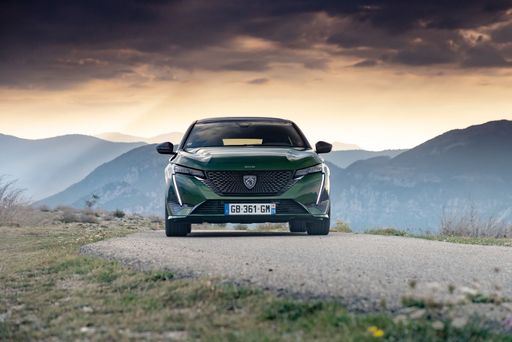 @ media.stellantis.com
@ media.stellantis.com
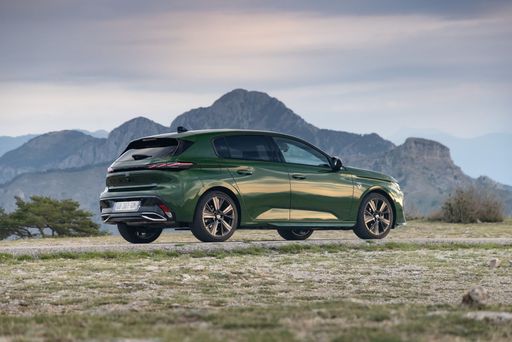 @ media.stellantis.com
@ media.stellantis.com
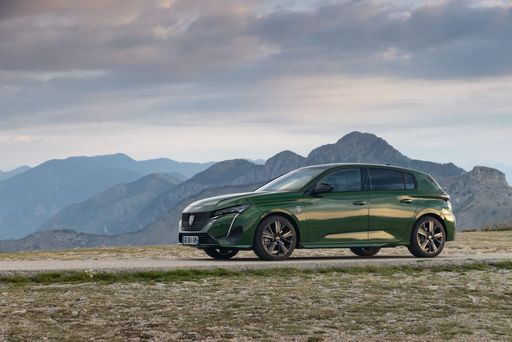 @ media.stellantis.com
@ media.stellantis.com
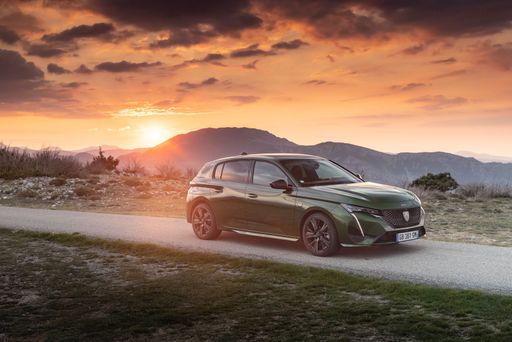 @ media.stellantis.com
@ media.stellantis.com
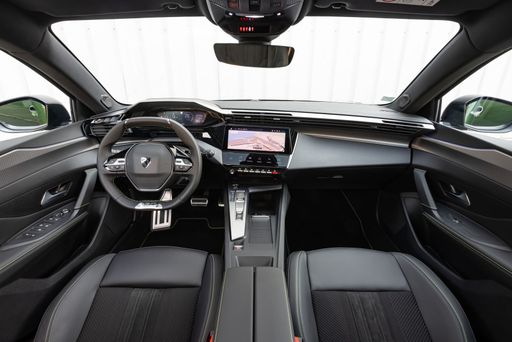 @ media.stellantis.com
@ media.stellantis.com
Renault Symbioz
El Symbioz es un innovador concepto de vehículo que redefine la movilidad del futuro. Su diseño elegante y moderno, combinado con un enfoque en la sostenibilidad, lo convierte en una opción atractiva para los conductores que buscan una experiencia de manejo única. Además, incorpora tecnologías avanzadas que promueven la conectividad y el bienestar en cada viaje.
detalles @ media.renault.at
@ media.renault.at
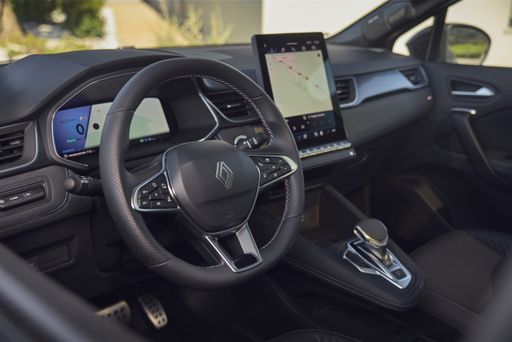 @ media.renault.at
@ media.renault.at
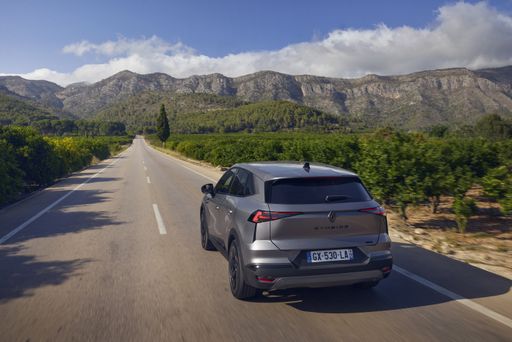 @ media.renault.at
@ media.renault.at

|

|
|
|
|
Costos y consumo |
|
|---|---|
|
Precio
34700 - 49600 €
|
Precio
30000 - 36400 €
|
|
Consumo L/100km
0.8 - 5.1 L
|
Consumo L/100km
4.5 - 5.9 L
|
|
Consumo kWh/100km
15.20 kWh
|
Consumo kWh/100km
-
|
|
Autonomía eléctrica
78 - 419 km
|
Autonomía eléctrica
-
|
|
Capacidad de la batería
51 kWh
|
Capacidad de la batería
-
|
|
co2
0 - 133 g/km
|
co2
102 - 134 g/km
|
|
Capacidad del tanque
42 - 53 L
|
Capacidad del tanque
48 L
|
Dimensiones y carrocería |
|
|---|---|
|
Tipo de carrocería
Hatchback
|
Tipo de carrocería
SUV
|
|
Asientos
5
|
Asientos
5
|
|
Puertas
5
|
Puertas
5
|
|
Peso en vacío
1436 - 1759 kg
|
Peso en vacío
1436 - 1544 kg
|
|
Capacidad del maletero
314 - 412 L
|
Capacidad del maletero
492 - 576 L
|
|
Longitud
4367 mm
|
Longitud
4413 mm
|
|
Anchura
1852 mm
|
Anchura
1797 mm
|
|
Altura
1441 mm
|
Altura
1575 mm
|
|
Capacidad máxima del maletero
1258 - 1323 L
|
Capacidad máxima del maletero
1582 - 1682 L
|
|
Capacidad de carga
431 - 510 kg
|
Capacidad de carga
376 - 379 kg
|
Motor y rendimiento |
|
|---|---|
|
Tipo de motor
Diésel, Eléctrico, Híbrido ligero gasolina, Híbrido enchufable
|
Tipo de motor
Híbrido ligero gasolina, Híbrido completo
|
|
Transmisión
Automática
|
Transmisión
Manuel, Automática
|
|
Detalle de transmisión
Caja automática, Caja de reducción, Automático de doble embrague
|
Detalle de transmisión
Caja manual, Caja automática
|
|
Tipo de tracción
Tracción delantera
|
Tipo de tracción
Tracción delantera
|
|
Potencia HP
130 - 195 HP
|
Potencia HP
140 - 158 HP
|
|
Aceleración 0-100km/h
7.6 - 10.6 s
|
Aceleración 0-100km/h
9.1 - 11.2 s
|
|
Velocidad máxima
170 - 225 km/h
|
Velocidad máxima
180 km/h
|
|
Par motor
230 - 300 Nm
|
Par motor
250 - 265 Nm
|
|
Número de cilindros
3 - 4
|
Número de cilindros
4
|
|
Potencia kW
96 - 144 kW
|
Potencia kW
103 - 116 kW
|
|
Cilindrada
1199 - 1598 cm3
|
Cilindrada
1333 - 1789 cm3
|
General |
|
|---|---|
|
Año del modelo
2023 - 2025
|
Año del modelo
2025
|
|
Clase de eficiencia de CO2
D, A, C, B
|
Clase de eficiencia de CO2
D, C
|
|
Marca
Peugeot
|
Marca
Renault
|
¿El Peugeot 308 se ofrece con distintas tracciones?
Disponible con Tracción delantera.
Los precios y datos mostrados son estimaciones basadas en los precios de lista en Alemania y pueden variar según el país. Esta información no es legalmente vinculante.
